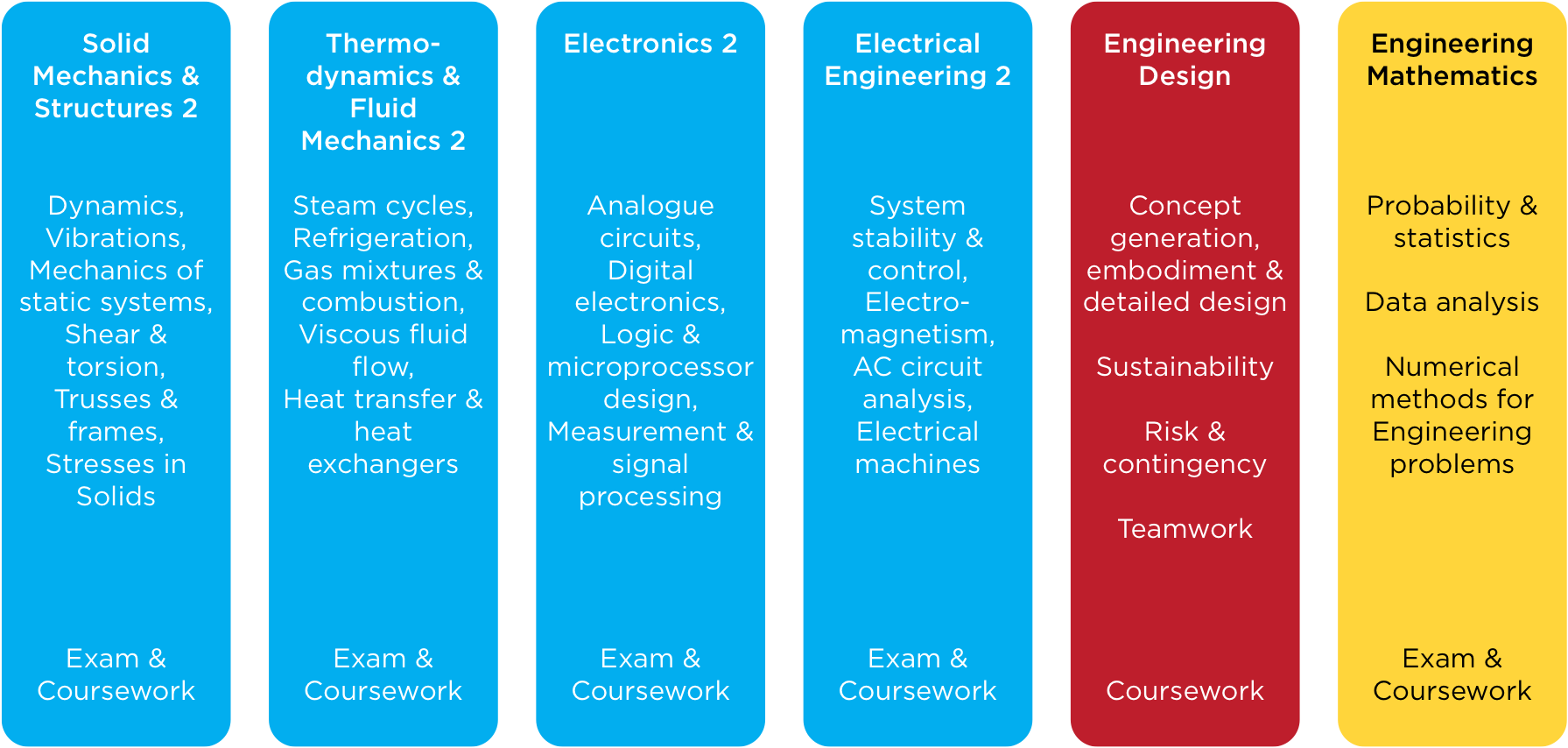2nd Year Engineering
As with the first year, in the second year of Durham’s General Engineering course you will learn about all of the core engineering disciplines of Mechanical, Civil, Electrical and Electronic Engineering. This is reflected in the second-year models, with one module aligned to each of these areas. The Solid Mechanics & Structures 2 module will build on the first-year content, strengthening students’ knowledge of the mechanics of materials and structures and inducing dynamics. The Thermodynamics & Fluid Mechanics 2 content explores more advanced topics, such as combustion and viscous fluid flow, whereas Electronics and Electrical Engineering are each the focus of a full module. The engineering modules are supported by an Engineering Mathematics module where students improve their understanding of probability and data analysis as well as different numerical tools that can be used to analyze Engineering problems.

In addition to lecture content, students will learn how to implement more complex routines on microcontrollers. They will also enhance their technical writing skills through formally-assessed laboratory reports and work in teams to solve challenging engineering problems guided by industry professionals as part of the Engineering Design module.
Engineering design
Durham’s Engineering students solve real Engineering problems supported by Professional Engineers. These design activities start in the first year with a design, build and test project, with the solved linked to the Institution of Mechanical Engineers' Design Challenges and Durham teams have gone onto compete, and win, the regional and national competitions. In the second and third years, Engineering Design lasts the whole year and students work in teams to solve challenging Engineering problems alongside industry professionals and academics. The Department's General Engineering philosophy is embraced in these projects with solutions typically needing knowledge across the Engineering disciplines.
Example Engineering Design projects:
Scalextric World Land Speed Record
“The world record for a Scalextric car is approximately 30 mph. The project is to identify the limitations of a conventional, off the shelf car in terms of the performance and then optimize the performance whilst staying within the rules of the record. Aspects including the adhesion, aerodynamics, electrical motor performance and weight will have to be determined using experiments and used to predict the performance under relevant conditions. It is anticipated that at the conclusion of the project, an attempt will be made to break the record, so a suitable location will have to be identified by the project team that fulfils the requirements of the record.”
Urban waste separation and revenue generation
“This project is linked to the Engineering for People Design Challenge (www.engineering-for-people.org). In 'Makers Valley,' an area of Johannesburg, South Africa, waste is a developing issue, with the majority of ending up in landfill and only 11% recycled. The 'informal recyclers' are looking for items of high value, e.g. plastic, paper, cans and glass, which they can sell on to buy-back centers. Manually going through bins is a dangerous occupation as often there are sharp or hazardous items inside. The project is to design a simple, low cost and easy to operate system that safely separates urban waste into a revenue generating fraction(s), and significantly reduces the amount that must be landfilled.”
My favourite part of the course was the Design modules. I really enjoyed learning a lot about topics that were not necessarily related to the course at that time and encountering them again later in the course.


/prod01/prodbucket01/media/durham-university/departments-/engineering/74202-5112X1676.jpg)